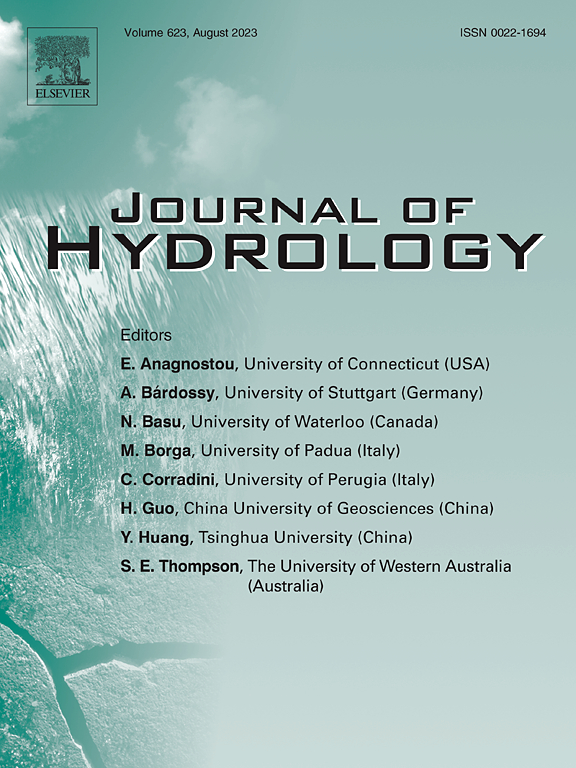Cutting-Edge strategies for absence data identification in natural hazards: Leveraging Voronoi-Entropy in flood susceptibility mapping with advanced AI techniques
IF 6.3
1区 地球科学
Q1 ENGINEERING, CIVIL
引用次数: 0
Abstract
One of the non-structural methods for flood management is preparing flood susceptibility mapping (FSM). The performance of flood susceptibility models significantly depends on the learning methods and data sampling. Random sampling is commonly employed for data sampling owing to its practicality and straightforwardness. A purely random method may not be the best choice for non-flood sampling, as floods typically occur in different locations at different times. Therefore, this research aims to propose a new method for determining flood absence points using a combination of Voronoi diagrams and the entropy method. To achieve this, flood susceptibility modeling was conducted using the XGBoost (eXtreme Gradient Boosting) algorithm optimized with the cat swarm optimization (CSO) algorithm, employing the proposed method for absence point determination in the sub-basin of the Khuzestan province of Iran. Therefore, for flood susceptibility modeling, three scenarios for determining no-occurrence points were employed: random sampling (Scenario 1), Voronoi diagram (Scenario 2), and the combination of Voronoi diagram with entropy-based method (Scenario 3). Additionally, three data split ratios (60:40, 70:30, and 80:20) were utilized for partitioning training and validation datasets.
Scenario 1 demonstrates varying area under the curve (AUC) of the receiver operating characteristic (ROC) curve values across different data split ratios, with the 60:40 ratio showing moderate accuracy (AUC = 0.720). Scenario 2 exhibits improved performance with higher AUC values (0.847 to 0.908) and balanced sensitivity–specificity trade-offs. Scenario 3 demonstrates varying performance across different data split ratios, achieving the highest modeling accuracy with an AUC of 0.888 in the 60:40 split. Overall, Scenarios 2 and 3 outperform Scenario 1, showcasing significant accuracy improvements ranging from 23.33 % to 30.1 % across different data split ratios. Using Voronoi diagrams and entropy-based methods notably enhances accuracy in determining no-occurrence points compared to random selection, emphasizing the importance of method selection in flood susceptibility modeling.
自然灾害缺失数据识别的前沿策略:利用先进的人工智能技术在洪水易感性映射中利用voronoi -熵
洪水敏感性图(FSM)是洪水管理的一种非结构性方法。洪水敏感性模型的性能在很大程度上取决于学习方法和数据采样。随机抽样由于其实用性和直接性,通常用于数据抽样。对于非洪水采样,纯随机方法可能不是最佳选择,因为洪水通常在不同时间发生在不同地点。因此,本研究旨在提出一种结合Voronoi图和熵法确定洪水缺席点的新方法。为此,在伊朗Khuzestan省的子流域,采用cat swarm optimization (CSO)算法优化的XGBoost (eXtreme Gradient Boosting)算法进行了洪水敏感性建模,并采用该方法确定了缺席点。因此,在洪水敏感性建模中,采用随机抽样(场景1)、Voronoi图(场景2)和Voronoi图与基于熵的方法相结合(场景3)三种确定无发生点的场景,并采用三种数据分割比例(60:40、70:30和80:20)对训练和验证数据集进行分区。场景1显示了不同数据分割比下受试者工作特征(ROC)曲线值的曲线下面积(AUC)的变化,60:40的比例显示中等精度(AUC = 0.720)。方案2具有更高的AUC值(0.847至0.908)和平衡的敏感性-特异性权衡,从而提高了性能。场景3演示了不同数据分割比例下的不同性能,在60:40分割中,AUC为0.888,达到了最高的建模精度。总体而言,方案2和方案3优于方案1,在不同的数据分割比率中显示出23.33%到30.1%的显著准确性改进。与随机选择相比,使用Voronoi图和基于熵的方法显著提高了确定不发生点的准确性,强调了方法选择在洪水敏感性建模中的重要性。
本文章由计算机程序翻译,如有差异,请以英文原文为准。
求助全文
约1分钟内获得全文
求助全文
来源期刊

Journal of Hydrology
地学-地球科学综合
CiteScore
11.00
自引率
12.50%
发文量
1309
审稿时长
7.5 months
期刊介绍:
The Journal of Hydrology publishes original research papers and comprehensive reviews in all the subfields of the hydrological sciences including water based management and policy issues that impact on economics and society. These comprise, but are not limited to the physical, chemical, biogeochemical, stochastic and systems aspects of surface and groundwater hydrology, hydrometeorology and hydrogeology. Relevant topics incorporating the insights and methodologies of disciplines such as climatology, water resource systems, hydraulics, agrohydrology, geomorphology, soil science, instrumentation and remote sensing, civil and environmental engineering are included. Social science perspectives on hydrological problems such as resource and ecological economics, environmental sociology, psychology and behavioural science, management and policy analysis are also invited. Multi-and interdisciplinary analyses of hydrological problems are within scope. The science published in the Journal of Hydrology is relevant to catchment scales rather than exclusively to a local scale or site.
 求助内容:
求助内容: 应助结果提醒方式:
应助结果提醒方式:


